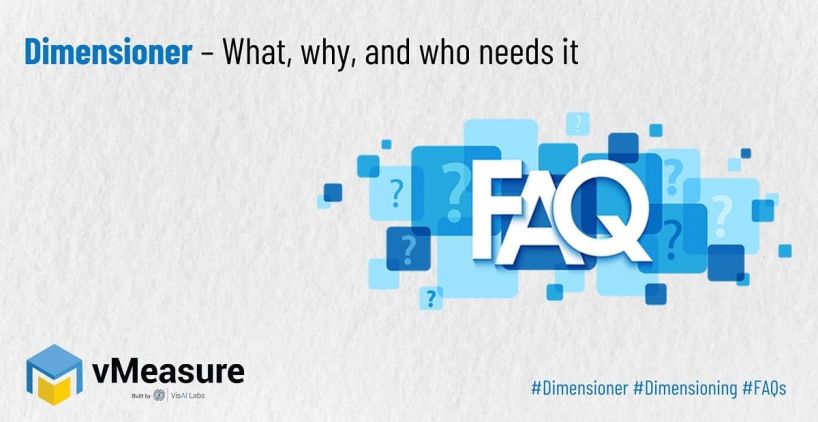Dimensioner - Ultimate Guide
Summary
Whether you like it or not, as an owner of an eCommerce firm, you would undoubtedly be wondering why you need a dimensioner. However, the solution is rather a plain dealing: Calibrating the package information and consistently monitoring your costs. So, in this blog post, we provide you with a far-reaching understanding of what a dimensioner is, why it is necessary, and who needs one, as well as some crucial factors to bear in mind before you take a stand.
Introduction
In recent days, the activity of buying and selling products online has become a piece of cake. Because of eCommerce, individuals can shop and receive products from the comfort of their homes. But behind the curtain, many backstage activities occur before the fulfillment stage.
As an illustration, once the customer places a purchase, the eCommerce channel will accept the order. Then, the warehouse staff will pick and pack the items and move them to the shipment. So, before loading the product, the warehouse staff would calibrate the product weight and dims to eliminate unnecessary void fills. Here is where the job of dimensioners comes into play because erroneous dim weight data would lead to expensive transportation costs.
What is a dimensioner?
Dimensioners are AI-enabled dimensioning machines calibrating the dims and weights of various regular and irregular-shaped objects. These dimension machines are mostly deployed in eCommerce firms to accurately calculate the shipping rates, cut manual dimensioning, and increase productivity in the warehouse.
How does a dimensioner work?
The dimensioners can accurately dimension, weigh, scan, and collect package information in less than a second. Additionally, you may incorporate other hardware like barcode scanners, label printers, and other WMS, TMS, and shipping applications with the correct dimensioners.
Who needs to adopt dimensioner?
Due to the explosion of online eCommerce, dimensioners are greatly needed to boost up the first, middle, and last mile process. And in the second instance, several carrier companies have lately shifted to a pricing strategy based on dimensional weight. And this led most eCommerce firms to pay back charges during last-mile delivery. So to eliminate pointless shipping charges, you need to generate the right dimensional weight information.
So before understanding who needs to adopt dimensioners, let’s have a clear overview of what dimensional/DIM weight is.
Instead of the box’s actual size or weight, the dimensional weight, also known as DIM weight, aids in determining the density of the package. This shows how much space the parcel/package would take up during shipment compared to its actual weight. You are charged the greater of the actual weight of the products or the centering fee for each shipment. The major reason for enabling a dim weight is to allow customers who pack more effectively to pay less for delivery.
To enhance productivity and efficiency in shipping and packing, a variety of eCommerce businesses, including warehouses, order fulfillment centers, micro fulfillment centers, logistics, carriers, Courier, express, and parcel (CEP), and retail organizations, employ dimensioners.
With that knowledge, let’s jump to fill the ideation gap of which type of dimensioner would be an ideal fit for your vertical.
Which dimensioner should you procure?
Nearly all eCommerce businesses have likely experienced this situation. After understanding that their business requires a dimensioner, the following thought is usually, “which sort of dimensioner should I procure for my firm?” So let’s get going. It would be best to comprehensively understand your organization’s operating paradigm before investing in a dimensioner.
Listed below are the types of dimesioners you need to know before procuring it in your vertical:
The dimensioners are categorized into two: static dimensioners and dynamic dimensioners.
The static dimensioners are lightweight, convenient, and affordable. However, throughout the product calibration, these dimensioners demand that the object remain still. The dynamic dimensioners, on the other hand, are expensive, rather huge in size, and change from vertical to vertical depending on the needs and technical requirements. However, they are lightning-fast and can calibrate more than 1000 packages in an hour.
Both the dimensioners would have a unique set of use cases. Be sure to understand your company’s requirements before the procurement.
Common FAQ you should ask before choosing the correct dimensioner for your vertical
How much does a dimensioner cost?
When it comes to acquiring the product, the price is crucial. The price of each dimensioner varies because of the vertical necessities. However, be watchful to examine dimensioners’ costs from several rivals’ ends and confirm that those dimensioners are NTEP-certified before procurement.
Is it feasible to integrate the other software with dimensioner?
You could wish to integrate your dimensioner with a WMS, TMS, or ERP software to get the most out of it. By doing this, you may reduce data input mistakes and make better use of the gathered dimensional data. Most dimensioners may also function as a stand-alone dimensioning system, providing an interface where you can start and see its real-time product measurements.
Do you need to purchase a dimensioner but aren’t sure which one to choose? You can solve all of your dimensioning issues at once with vMeasure Parcel Ultima, the world’s first and only dimensioner as a service (Dimaas). Therefore, get in touch with us to learn more, and our team of dimensioning professionals will get in touch with you as soon as possible.
